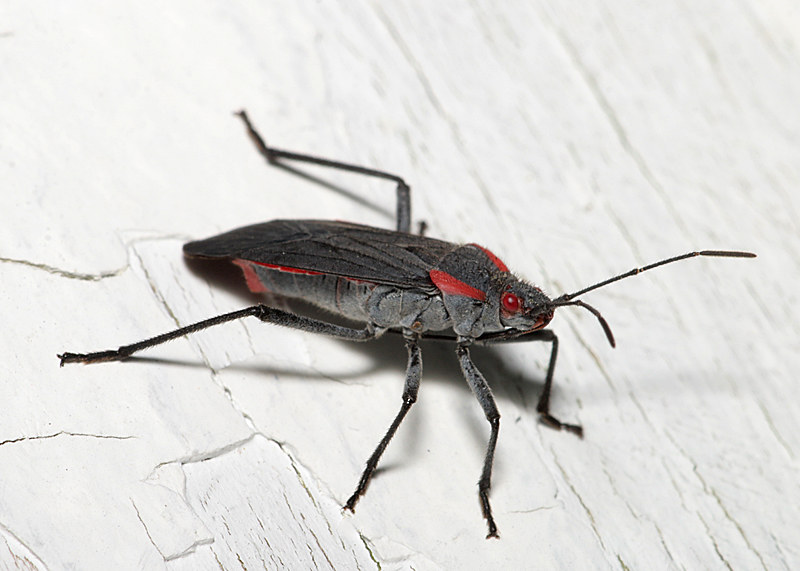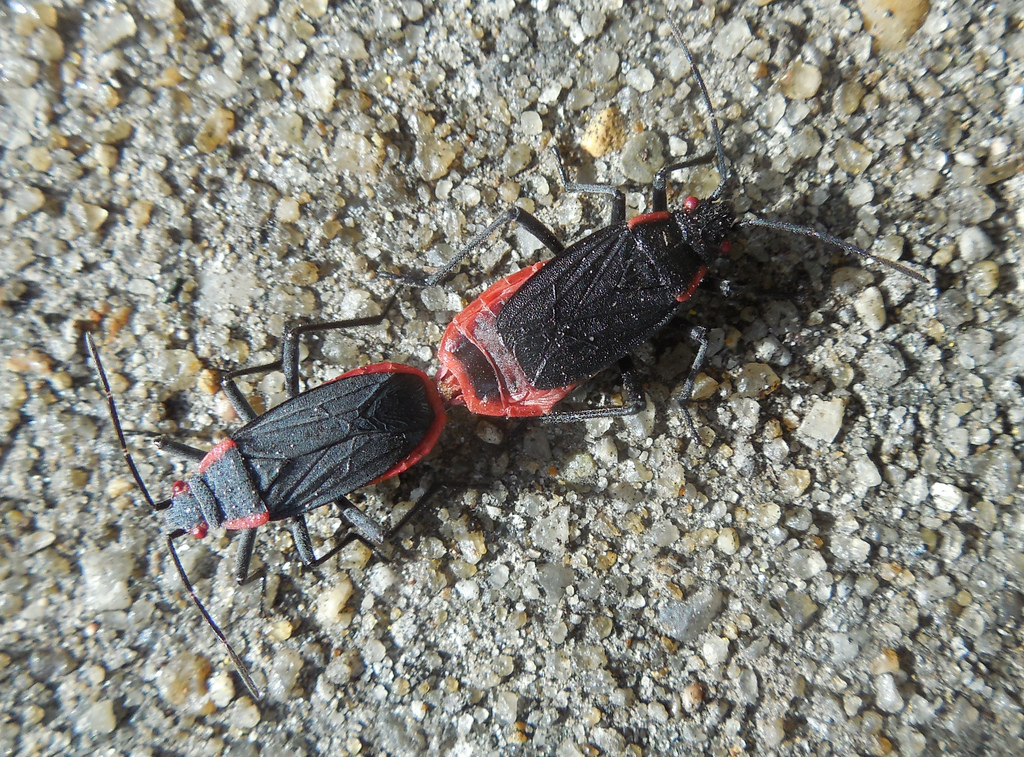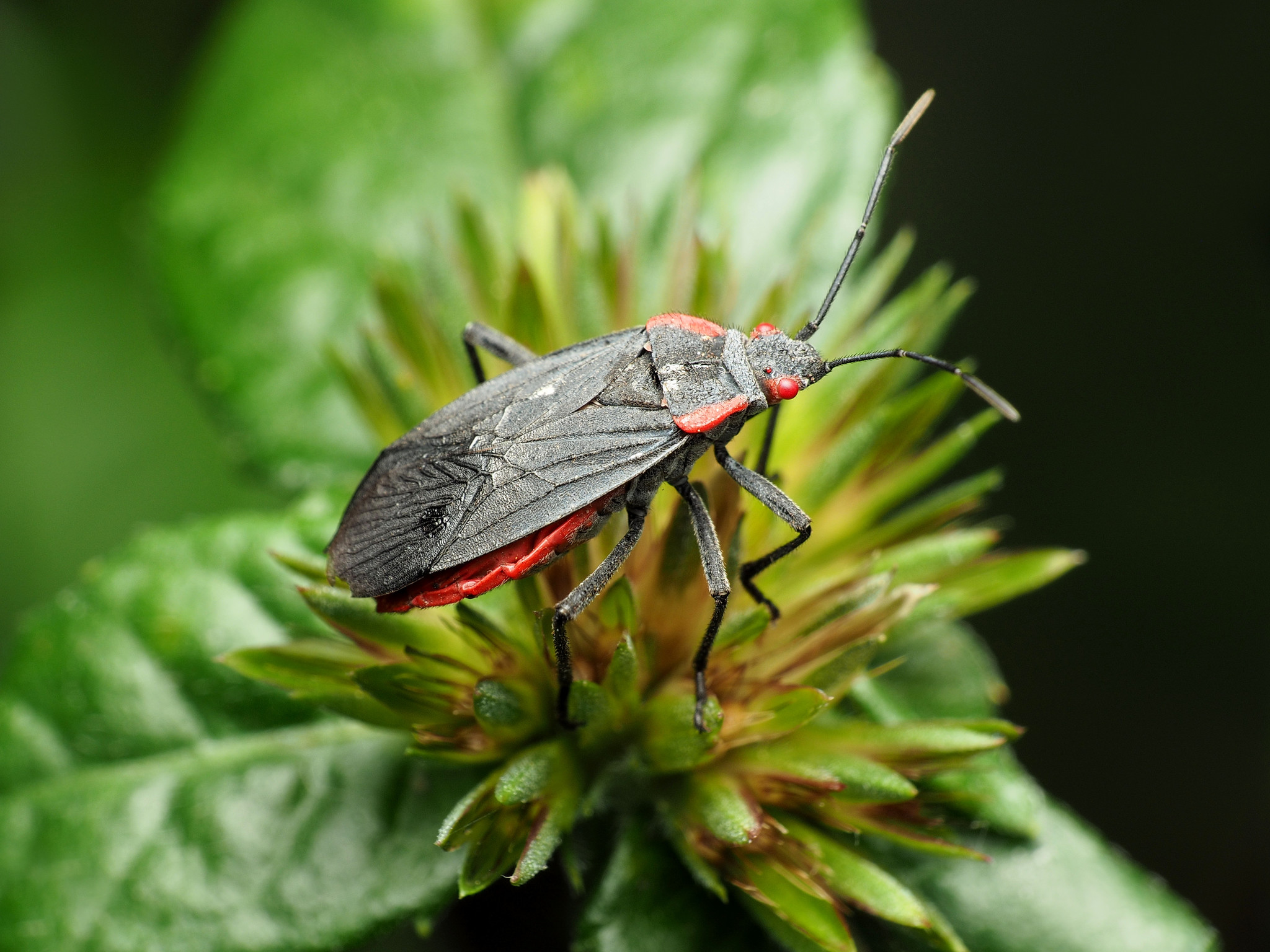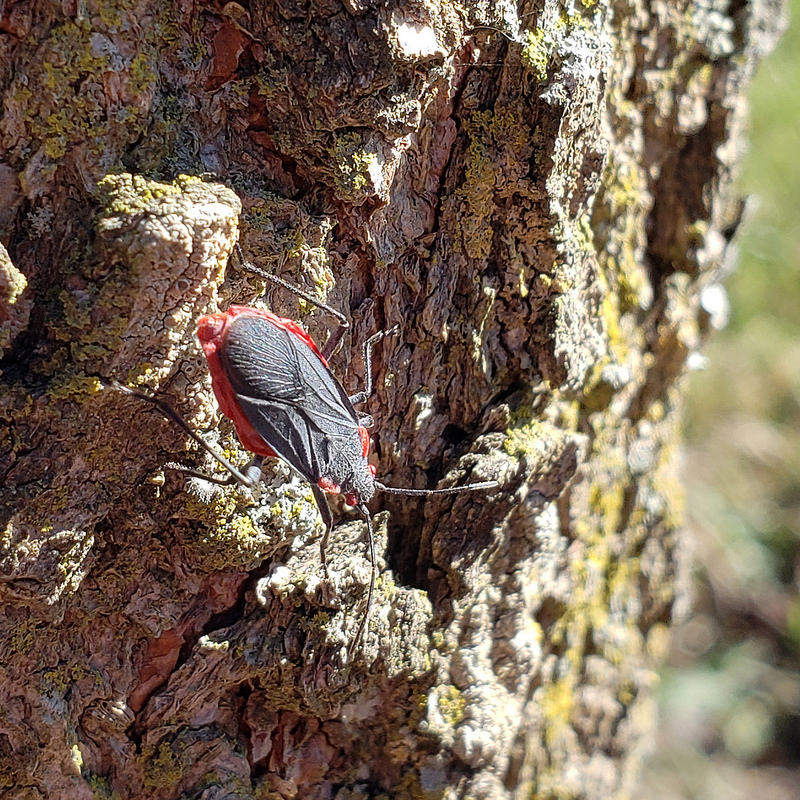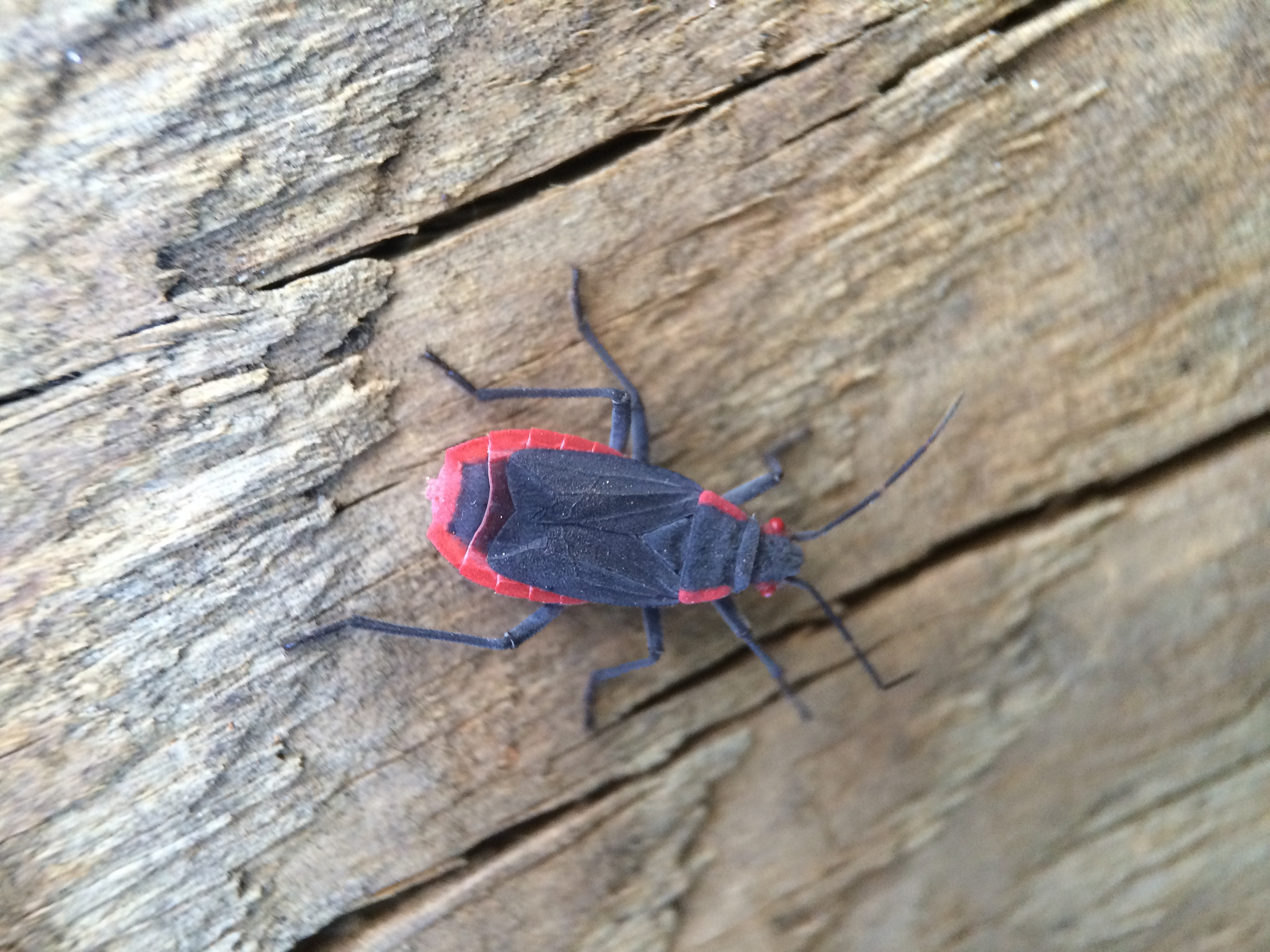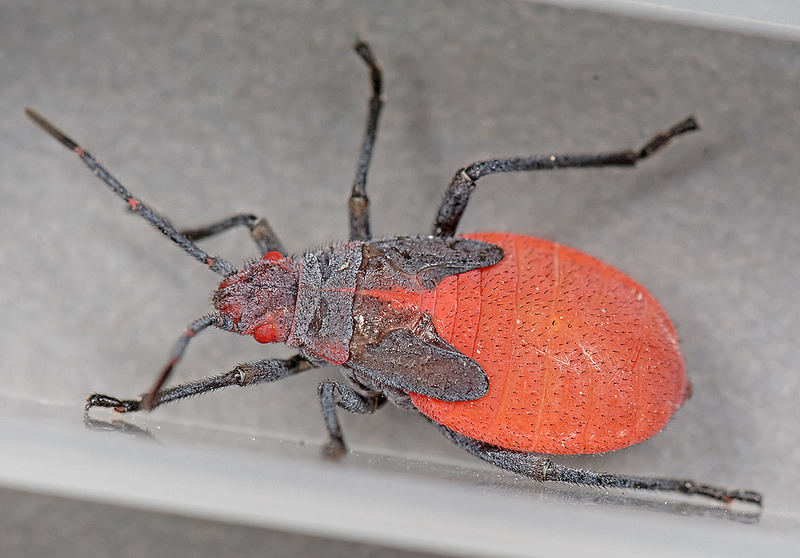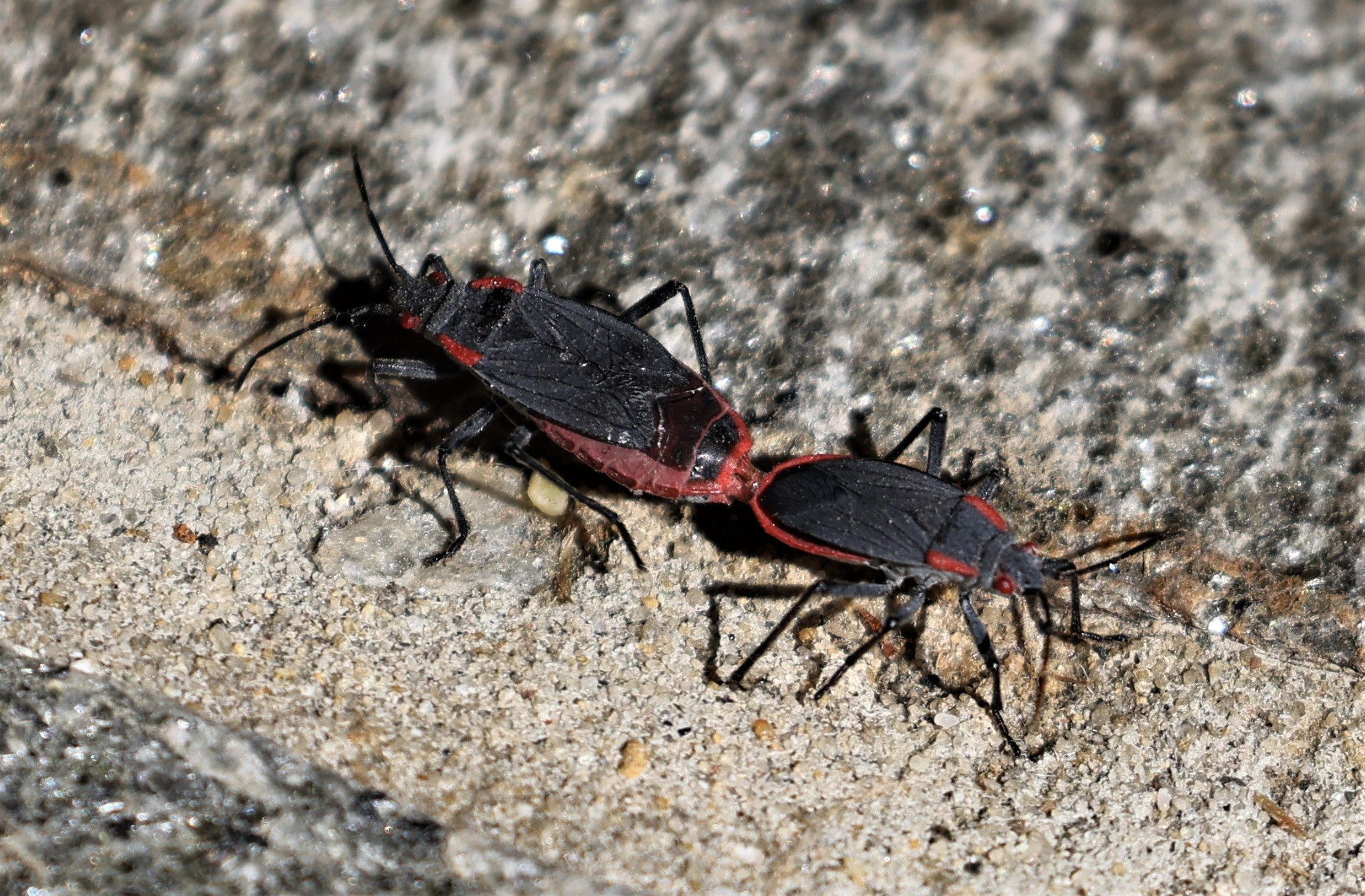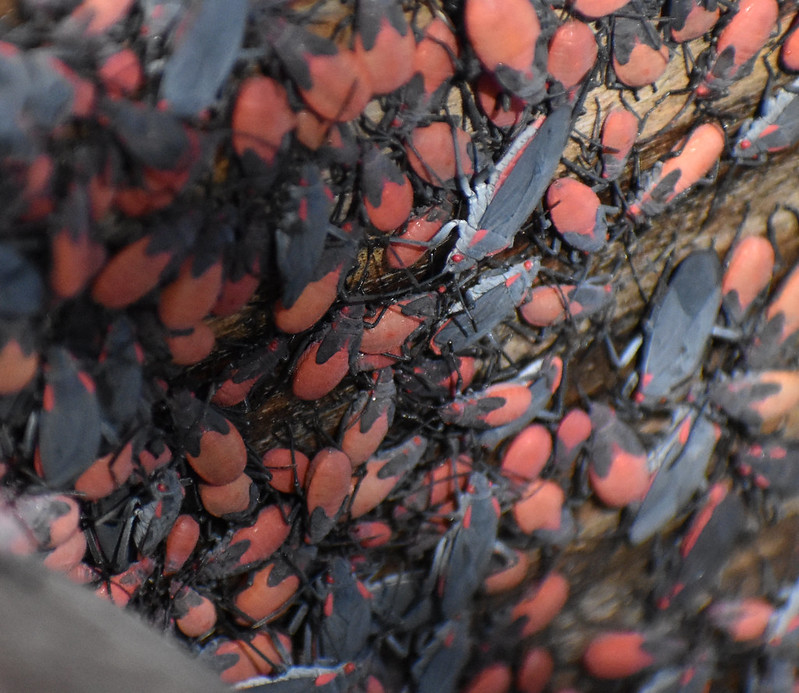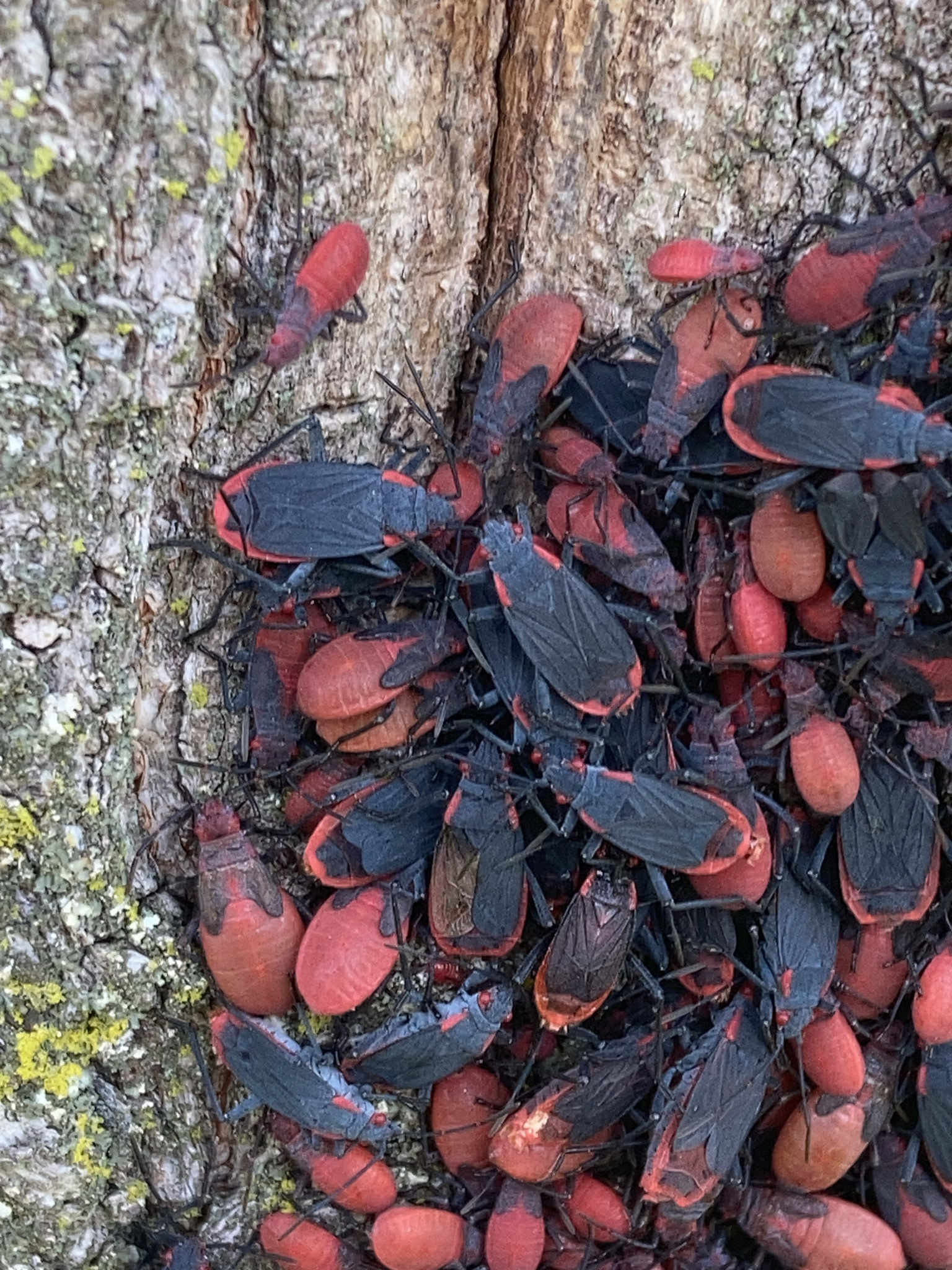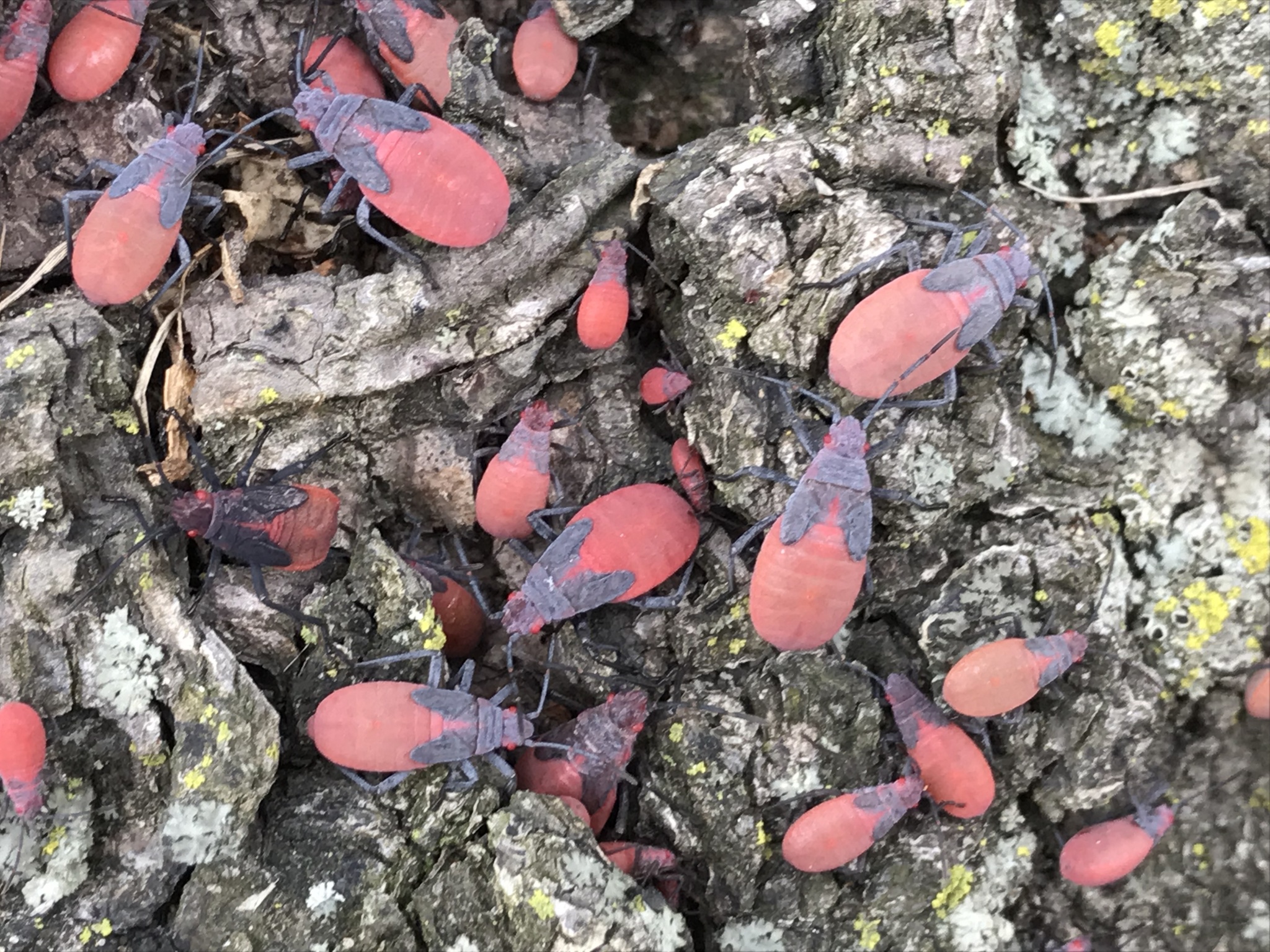Map Snapshot














86 Records
Relationships
Strongly associated with Goldenrain Tree.
Seasonality Snapshot
Source: Wikipedia
| Jadera haematoloma | |
|---|---|

| |
| Scientific classification | |
| Domain: | Eukaryota |
| Kingdom: | Animalia |
| Phylum: | Arthropoda |
| Class: | Insecta |
| Order: | Hemiptera |
| Suborder: | Heteroptera |
| Family: | Rhopalidae |
| Genus: | Jadera |
| Species: | J. haematoloma
|
| Binomial name | |
| Jadera haematoloma (Herrich-Schäffer, 1847)
| |
Jadera haematoloma, the red-shouldered bug, goldenrain-tree bug or soapberry bug is a species of true bug that lives throughout the United States and south to northern South America.[1] It feeds on seeds within the soapberry plant family, Sapindaceae, and is known to rapidly adapt to feeding on particular hosts. The species is often confused with boxelder bugs and lovebugs.
Description
[edit]Jadera haematoloma are typically 9.5–13.5 millimetres (0.37–0.53 in) long and 3–4 millimetres (0.12–0.16 in) wide, though the short-winged form (brachyptera) usually is 7–8 millimetres (0.28–0.31 in) long. Color is mostly blackish (sometimes, bluish grey, or purplish, or bright red immediately after molting) except for red eyes, "shoulders" (lateral margins of pronotum), and costal margins and dorsal part of abdomen. Nymphs are mostly red with a black pronotum and wingpads. All appendages are blackish.[1]
Distribution
[edit]For most of the twentieth century, little was known about the range of J. haematoloma. Reports showed breeding populations to be present in Florida, Kansas, Colorado, Texas, Arizona, California, Alabama, Illinois, North Carolina, Missouri, Iowa, as well as Georgia, South Carolina, Virginia, Pennsylvania, Maryland, and Royal Oak, Michigan.[2][3][4][5][6] A study published in 1987 showed the distribution of J. haematoloma and "revealed the close correspondence of records for the bug with the ranges of the soapberry plants that serve as the insects native hosts."[7] In addition, isolated examples have been reported as far north as Minnesota. Outside of the United States, J. haematoloma is found south through Central America and the West Indies to Colombia and Venezuela.[8][9]
Although native to the New World, the discovery of J. haematoloma populations in Taiwan in 2012 marked the first finding of the species and genus in Asia.[10]
Evolution
[edit]Two populations in southern Florida are particularly notable. The more southern of these two populations feeds on the seeds of a native host vine balloon vine (Cardiospermum corindum). This vine produces capsules of a fairly uniform size, which adult J. haematoloma feed on by inserting their mouthparts (beak) through the capsule's exterior and into the interior seeds. In the mid-1950s, a related southeast Asian tree, the Taiwanese Flamegold (Koelreuteria elegans), was introduced as an ornamental plant. It escaped domestication and naturalized. Significantly, the Flamegold was colonized by J. haematoloma, though its capsules are smaller and the seeds less deeply embedded than in the balloon vine.
In a seminal paper published in the scientific journal Genetica in 2001, it was shown evolution had taken place in this colonizing population of J. haematoloma on the Flamegold in a period of only a few decades.[11] They showed that the beak length, which in the ancestral type was about 70% the length of the body, was only about 50% the body length in the insects that had colonized the non-native tree, though the size of the bugs themselves had not changed. In addition, they found that:[12]
...derived bugs mature 25% more rapidly, are 20% more likely to survive, and lay almost twice as many eggs when reared on seeds of the introduced host rather than those of the native host. Fecundity is also twice as great as that of ancestral type bugs reared on either host, while egg mass is 20% smaller.
References
[edit]- ^ a b Mead FW, Fasulo TR. Scentless plant bugs, Jadera spp. Featured Creatures. July 2007. Last accessed 2008-08-08
- ^ Van Duzee; E. P. (1917). "Catalogue of the Hemiptera of America north of Mexico excepting the Aphididae, Coccidae, and Aleurodidae" (PDF). University of California Publications, Technical Bulletins, Entomology. 2: i–xiv, 1–902. doi:10.5962/bhl.title.29381. hdl:2027/mdp.39015048441029.
- ^ Blatchley, W.S. (1926). Heteroptera or True Bugs of Eastern North America, with Especial Reference to the Faunas of Indiana and Florida. Indianapolis: The Nature Publishing Company. p. 1166.
- ^ Brimley, C.S. (1938). The Insects of North Carolina, Being a List of the Insects of North Carolina and Their Near Relatives. Raleigh: North Carolina Department of Agriculture. p. 560.
- ^ Froeschner, Richard C. (1944). "Contributions to a synopsis of the Hemiptera of Missouri, pt. III. Lygaeidae, Pyrrhocoridae, Piesmidae, Tingididae, Enicocephalidae, Phymatidae, Ploriaridae, Reduviidae, Nabidae". American Midland Naturalist. 31 (3): 638–683. doi:10.2307/2421413. JSTOR 2421413.
- ^ Slater, J.A.; R.M. Baranowski (1978). How to Know True Bugs. Dubuque, IA: Wm. C. Brown. p. 256.
- ^ Carroll, S.P.; E. Loye (1987). "Specialization of Jadera species (Hemiptera: Rhopalidae) on the seeds of Sapindaceae (Sapindales), and coevolutionary responses of defense and attack". Annals of the Entomological Society of America. 80 (3): 373–378. doi:10.1093/aesa/80.3.373.
- ^ Hoffman, Richard L.; Steiner, Warren E. (2005). "Jadera haematoloma, Another Insect on its Way North (Heteroptera: Rhopalidae)". Banisteria. 26. Virginia Natural History Society: 7–10. hdl:10088/24685. ISSN 1066-0712.
- ^ Carroll, S.P. (1988): Contrasts in reproductive ecology between temperate and tropical populations of Jadera haematoloma, a mate-guarding Hemipteran (Rhopalidae). Entomological Society of America, 81, 54-63.
- ^ Jing-Fu Tsai; Yi-Xuan Hsieh; Dávid Rédei (2013). "The soapberry bug, Jadera haematoloma (Insecta, Hemiptera, Rhopalidae): First Asian record, with a review of bionomics". ZooKeys (297): 1–41. doi:10.3897/zookeys.297.4695. PMC 3689129. PMID 23794880.
- ^ Scott P. Carroll; Hugh Dingle; Thomas R. Famula; CharlesW. Fox (2001). "Genetic architecture of adaptive differentiation in evolving host races of the soapberry bug, Jadera haematoloma" (PDF). Genetica. Contemporary Issues in Genetics and Evolution. 112–113: 257–272. doi:10.1007/978-94-010-0585-2_16. ISBN 978-94-010-3889-8. PMID 11838769.
- ^ Carroll, S.P., Klassen, S.P. & Dingle, H (1998): Rapidly evolving adaptations to host ecology and nutrition in the soapberry bug. Evolution and Ecology, 12, 955-968.
External links
[edit]- Detailed species account of Jadera haematoloma
- scentless plant bug, Jadera spp. on the UF / IFAS Featured Creatures Web site
